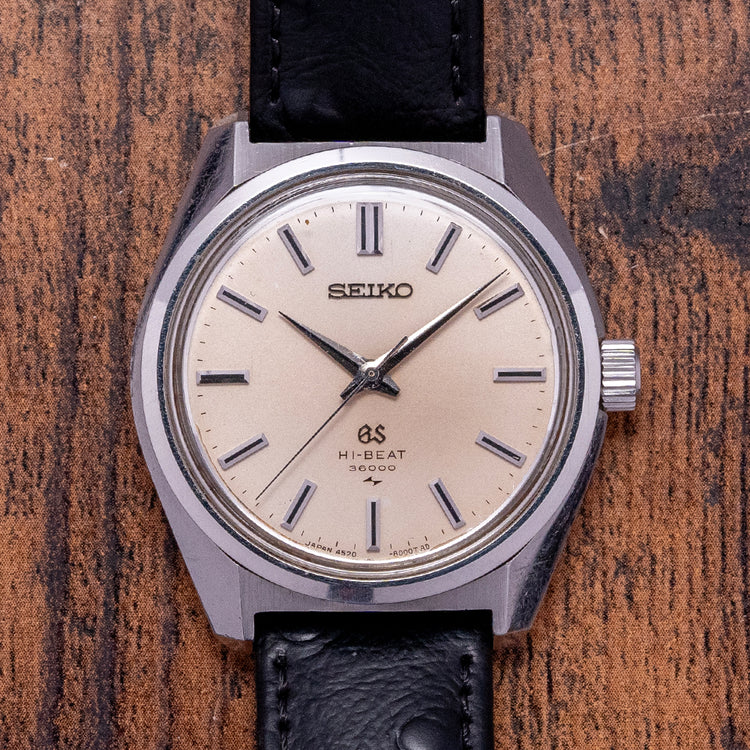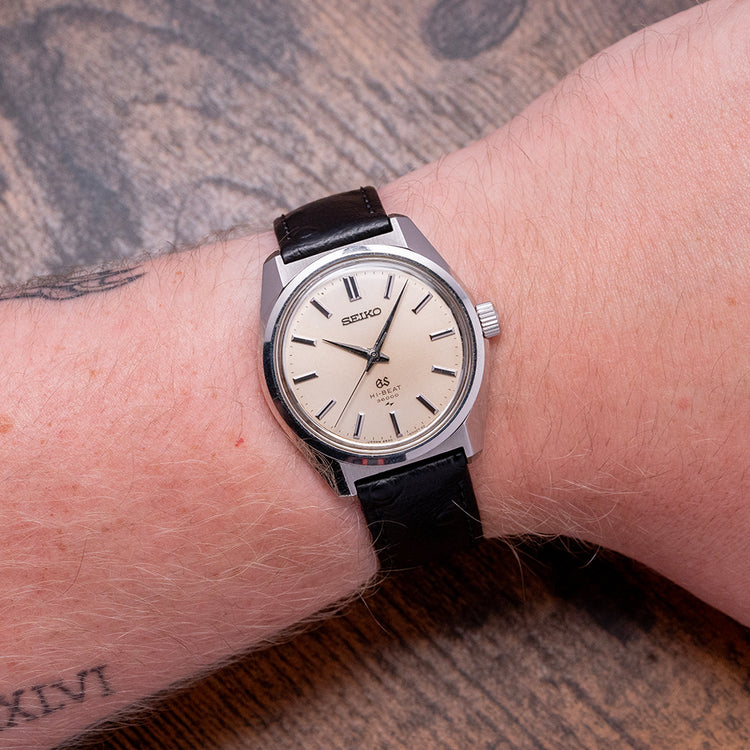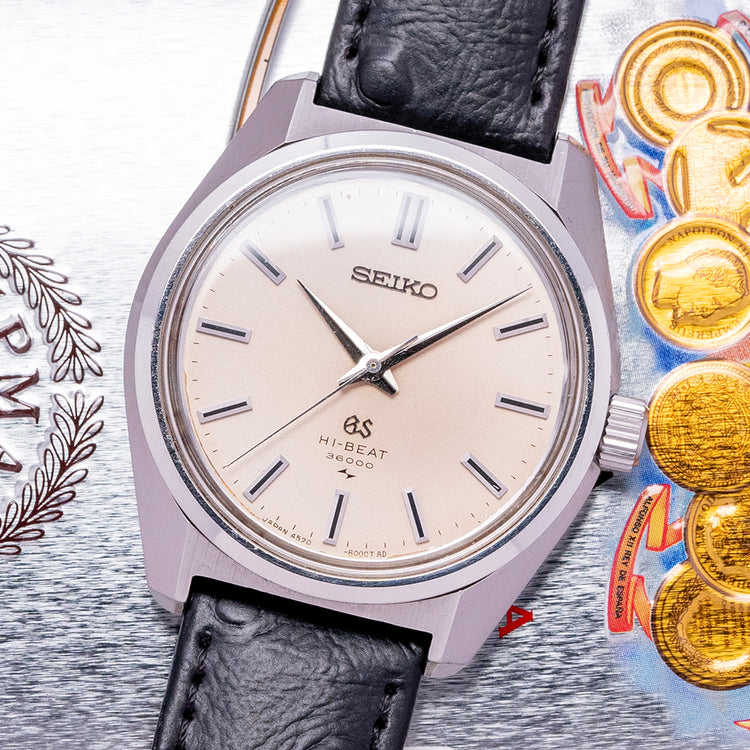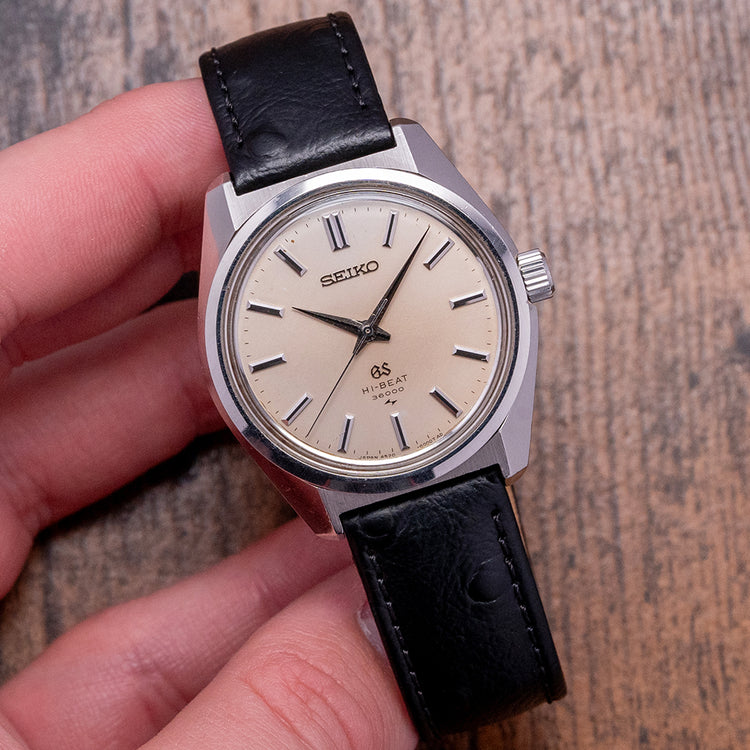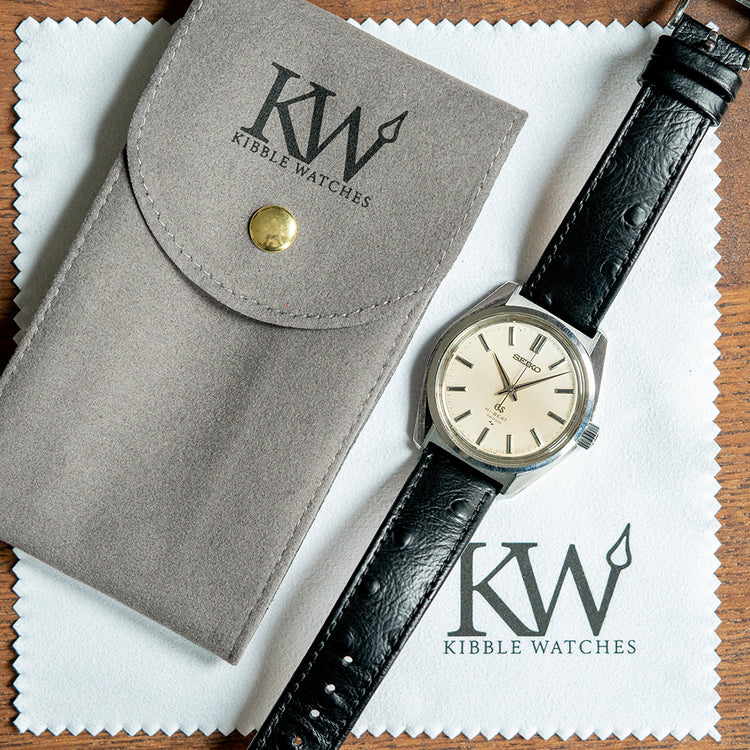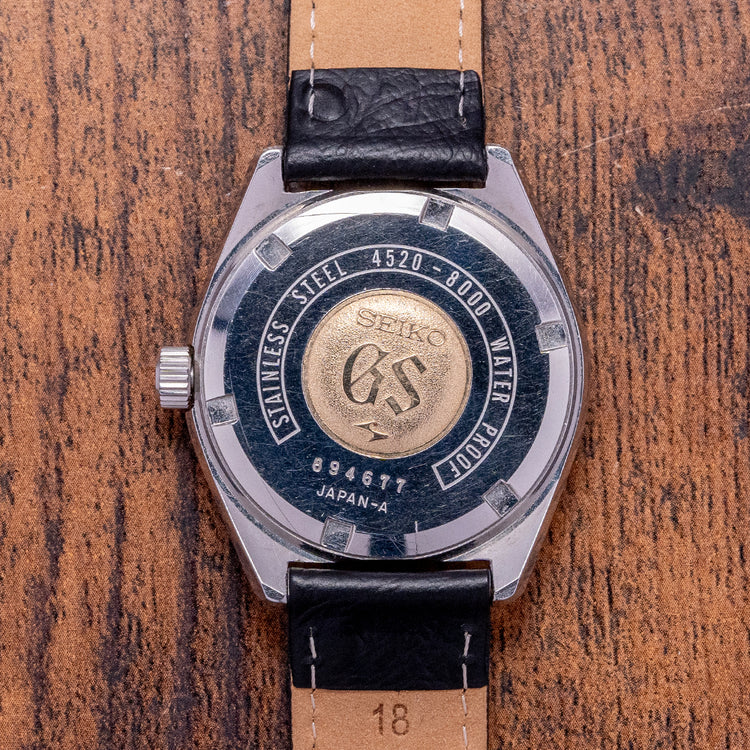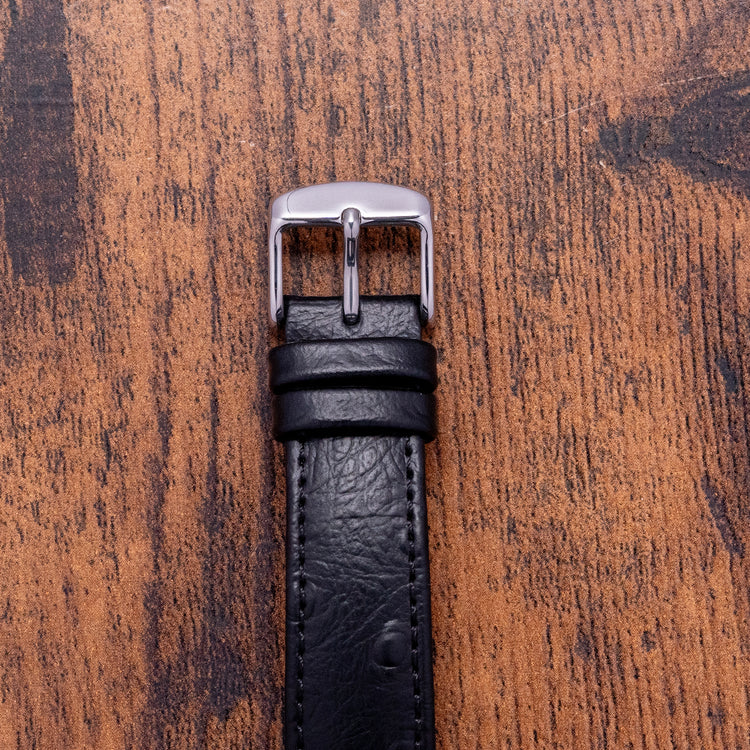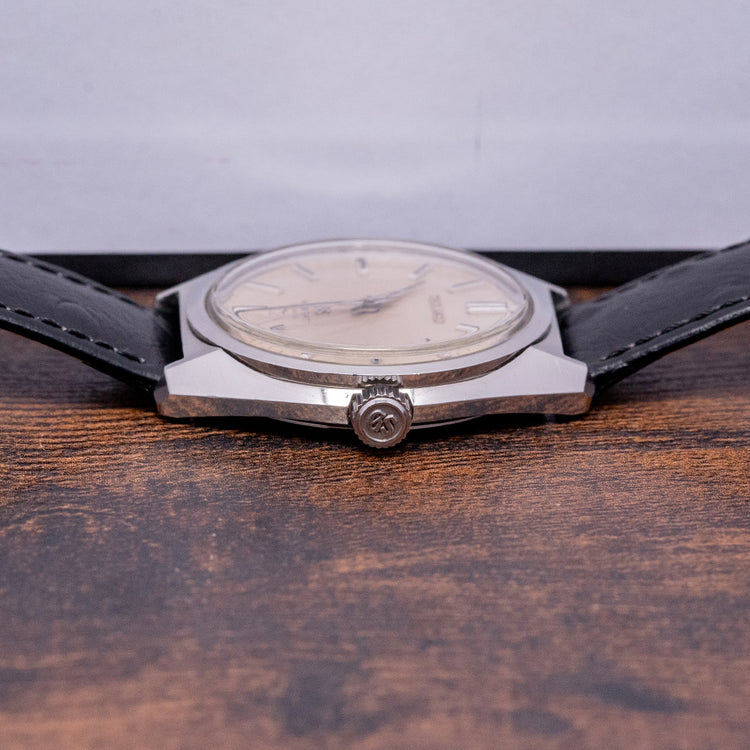More Information
Description
More
Less
Here we have a classic 1968 Seiko Grand Seiko Hi-Beat 36000 Manual 4520-8000 with a 36mm stainless steel case. The case gently curves over your wrist with stubby lugs, and a lug-to-lug length of 41.5mm and a thickness of 8.5mm ensures a comfortable fit. The case flanks flow effortlessly, with chamfered edges and crisp lines still evident along the lug edges. On the right side is a signed crown. The bezel is recessed into the case for a distinctive profile, with the crystal sitting proud of the dial. The off-white dial has applied facet-edged batons marking the hours that catch the light as you rotate your wrist. Elegant, slender dauphine hands with polished edges are complemented by a tapered second hand. At noon, an applied “Seiko”; at 6 o’clock, an applied “GS” with “Hi-Beat 36000” printed in black text. On the reverse, a screw-down case back with the details of the watch inside the Seiko horseshoe and the Grand Seiko gold medallion embossed in the centre, inside a high-beat manually wound Grand Seiko Cal. 4520A, 25 jewels, beating at 36,000 Beats per hour. This quality “no-date” movement was made at the Daini Seikosha factory between 1968 and 1972, it is much more elegant and has a thinner profile than the Suwa automatic movement of the same time period. The watch comes paired with an 18mm leather strap and pin buckle.
Points of Mention
More
Less
Personal Note
More
Less
Specification
More
Less
Movement : Manually Wound Grand Seiko Cal. 4520A
Age : Circa. September 1968
Year : 1968
Case Size : 36mm
Case Thickness : 8.5mm
Lug to Lug : 41.5mm
Lugs : 18mm
Condition : Pre-Owned
Box and Papers : None
Case Material : Stainless Steel
Warranty : 12-Months NON-Waterproof Warranty
The wrist model's wrist size is 7inch
About Grand Seiko
More
Less
Description
Here we have a classic 1968 Seiko Grand Seiko Hi-Beat 36000 Manual 4520-8000 with a 36mm stainless steel case. The case gently curves over your wrist with stubby lugs, and a lug-to-lug length of 41.5mm and a thickness of 8.5mm ensures a comfortable fit. The case flanks flow effortlessly, with chamfered edges and crisp lines still evident along the lug edges. On the right side is a signed crown. The bezel is recessed into the case for a distinctive profile, with the crystal sitting proud of the dial. The off-white dial has applied facet-edged batons marking the hours that catch the light as you rotate your wrist. Elegant, slender dauphine hands with polished edges are complemented by a tapered second hand. At noon, an applied “Seiko”; at 6 o’clock, an applied “GS” with “Hi-Beat 36000” printed in black text. On the reverse, a screw-down case back with the details of the watch inside the Seiko horseshoe and the Grand Seiko gold medallion embossed in the centre, inside a high-beat manually wound Grand Seiko Cal. 4520A, 25 jewels, beating at 36,000 Beats per hour. This quality “no-date” movement was made at the Daini Seikosha factory between 1968 and 1972, it is much more elegant and has a thinner profile than the Suwa automatic movement of the same time period. The watch comes paired with an 18mm leather strap and pin buckle.
Points of Mention
Personal Note
Specification
The Brand
Enquire or Book an Appointment
Would you like to discover further details about this watch, or perhaps arrange an appointment to view and try it on? Complete this form and a member of our team will get back to you shortly.
You May Also Like




















